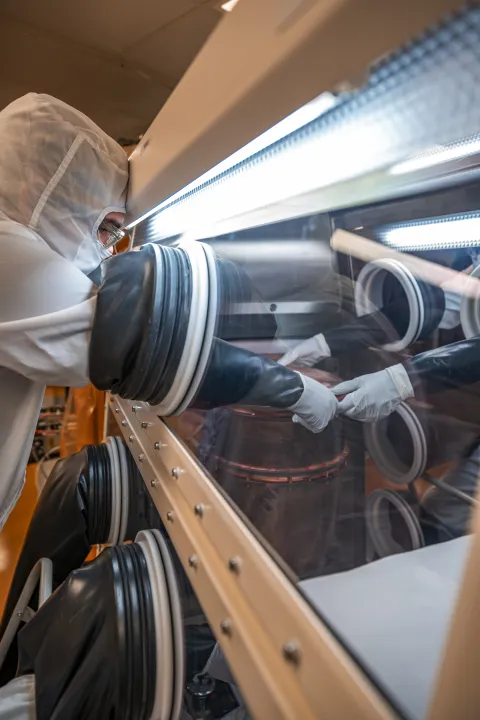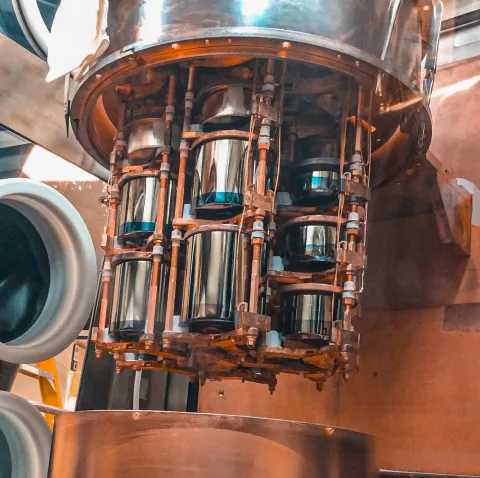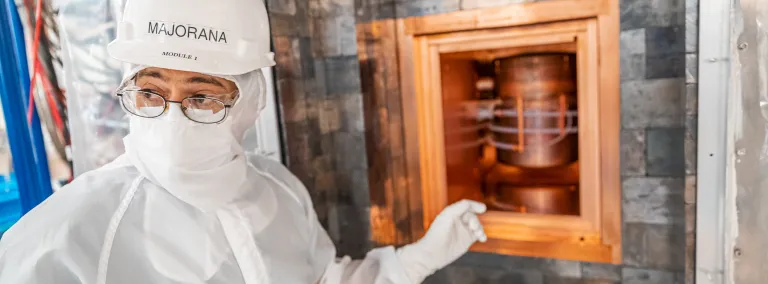Researchers complete sensitive upgrade to the Majorana Demonstrator
Despite COVID-19-influenced delays, the Majorana Demonstrator collaboration completed a detector swap
Researchers recently performed the equivalent to open-heart surgery on a particle physics experiment. A cleanroom on the 4850 Level of Sanford Underground Research Facility (Sanford Lab) served as the operating room. There, researchers in full-body clean suits slipped triple-gloved hands into a clear, airtight glovebox where they attached fragile, vein-like wires to crystalline detectors and suspended those detectors in a delicate copper framework.
This sensitive operation was a long-awaited upgrade to the Majorana Demonstrator (Majorana), that replaced five of Majorana’s original detectors with four newly fabricated detectors this August.

Majorana searches for a rare particle decay using an array of germanium crystal detectors. For the last four years, the experiment has operated in an underground cleanroom, behind a shield of copper and lead bricks. Majorana is extremely sensitive to dust and other particulates that could contaminate the experiment, producing intrusive background signals. This is why, as researchers undertook a detector swap, they observed extreme cleanliness measures.
The completion of the detector exchange, originally slated for early 2020, was delayed by the arrival of COVID-19 in the United States.
“Before we could make the detector exchange underground, a lot of preparation had to be done at different national labs and universities. As COVID-19 began impacting those organizations, a lot of work took longer to complete,” said Ralph Massarczyk, a staff scientist at Los Alamos National Lab working with the Majorana experiment, who helped perform the detector swap.

This month, with safety regulations in place, a small group of researchers completed the upgrade. The new detectors will be tested in Majorana for use in a scaled up, next-generation experiment.
“After this exchange, we will get data on the new detectors, as well as valuable data that will contribute to the search for neutrinoless double-beta decay,” said Massarczyk, referring to the rare particle decay the Majorana collaboration hopes to observe.
Read more about Majorana’s new detectors and preparation for LEGEND-200.
